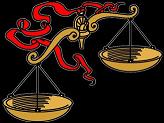Desi 70s show
...nice music too ;-)
Itnii Shakti Hamen De Na Daataa
Khamosh Raat
Sehmi Hawaa
Tanha Tanha Dil Apna
Tanha Tanha Dil Apna
Aur Door Kahin, Roshan Hua Ek Chehra
Ek Chehra, Ek Chehra
Ye Sach Hai Ya Sapna
Ye Sach Hai Ya Sapna
Ye Sach Hai Ya Sapna
Khamosh Raat
Sehmi Hawaa
Tanha Tanha Dil Apna
Tanha Tanha Dil Apna
Aur Door Kahin, Roshan Hua Ek Chehraa
Ek Chehraa, Ek Chehraa
Ye Sach Hai Ya Sapna
Ye Sach Hai Ya Sapna
Jhuki Jhuki Palkein Jab Uthi
Nainon Mein Diye Madham Madham
Adh Khule Hothon Se Hansee
Jhaank Rahi Madham Madham
Kaise Kahan Phir Ho Gayee
Uski Charee Madham Madham
Pal Pal Uthti Hasratein
Hone Lagi Madham Madham
Aur Door Kahin, Roshan Hua Ek Chehraa
Ek Chehraa, Ek Chehraa
Sooraj Tha Pe Noor Sa
Uski Tanak Madham Madham
Chaand Bhi Sa Bujha Bujha
Taare Bhi The Madham Madham
Jugnu Dilasa Dene Lagey
Nanhi Si Jaan Madham Madham
Shamaa Bhi Thak Haar Ke
Hone Lagee Madham Madham
Aur Door Kahin, Roshan Hua Ek Chehraa
Ek Chehraa, Ek Chehraa...
Jeene Ka Tha Hum Mein Dam
Par Nahin Tha Koi Humdam
Khushiyoon Ki Thi Justajoo
Mil Rahe Thay Bas Gham Hi Gham
Shuru Mein Is Duniya Ke Bhi
Khamoshi Thi Aur Ek Thay Hum
Rahein Sabhi Thi Sooni Sooni
Uth Rahe Thay Kadam Tham Tham
Aur Door Kahin, Roshan Hua Ek Chehraa
Ek Chehraa, Ek Chehraa
Ye Sach Hai Ya Sapna
Ye Sach Hai Ya Sapna
Khamosh Raat
Sehmi Hawaa
Tanha Tanha Dil Apna
Tanha Tanha Dil Apna
Aur Door Kahin, Roshan Hua Ek Chehraa
Ek Chehraa, Ek Chehraa
Ye Sach Hai Ya Sapna
Ye Sach Hai Ya Sapna
[Movie: Thakshak (1999)]
Isnt it ironic? The more you use the telephone, email or chat to communicate, the more you realise that nothing can replace the feeling of actually being there
After a pretty long hiatus, this blog is up again. Had been busy with work, and vacation and so other things ended up taking a back seat.


for all that i have,
(from an article on time.com)
It would be a lot easier to enjoy your life if there weren't so many things trying to kill you every day. The problems start even before you're fully awake. There's the fall out of bed that kills 600 Americans each year. There's the early-morning heart attack, which is 40% more common than those that strike later in the day. There's the fatal plunge down the stairs, the bite of sausage that gets lodged in your throat, the tumble on the slippery sidewalk as you leave the house, the high-speed automotive pinball game that is your daily commute.
Other dangers stalk you all day long. Will a cabbie's brakes fail when you're in the crosswalk? Will you have a violent reaction to bad food? And what about the risks you carry with you all your life? The father and grandfather who died of coronaries in their 50s probably passed the same cardiac weakness on to you. The tendency to take chances on the highway that has twice landed you in traffic court could just as easily land you in the morgue.
Shadowed by peril as we are, you would think we'd get pretty good at distinguishing the risks likeliest to do us in from the ones that are statistical long shots. But you would be wrong. We agonize over avian flu, which to date has killed precisely no one in the U.S., but have to be cajoled into getting vaccinated for the common flu, which contributes to the deaths of 36,000 Americans each year. We wring our hands over the mad cow pathogen that might be (but almost certainly isn't) in our hamburger and worry far less about the cholesterol that contributes to the heart disease that kills 700,000 of us annually.
We pride ourselves on being the only species that understands the concept of risk, yet we have a confounding habit of worrying about mere possibilities while ignoring probabilities, building barricades against perceived dangers while leaving ourselves exposed to real ones. Six Muslims traveling from a religious conference were thrown off a plane last week in Minneapolis, Minn., even as unscreened cargo continues to stream into ports on both coasts. Shoppers still look askance at a bag of spinach for fear of E. coli bacteria while filling their carts with fat-sodden French fries and salt-crusted nachos. We put filters on faucets, install air ionizers in our homes and lather ourselves with antibacterial soap. "We used to measure contaminants down to the parts per million," says Dan McGinn, a former Capitol Hill staff member and now a private risk consultant. "Now it's parts per billion."
At the same time, 20% of all adults still smoke; nearly 20% of drivers and more than 30% of backseat passengers don't use seat belts; two-thirds of us are overweight or obese. We dash across the street against the light and build our homes in hurricane-prone areas--and when they're demolished by a storm, we rebuild in the same spot. Sensible calculation of real-world risks is a multidimensional math problem that sometimes seems entirely beyond us. And while it may be true that it's something we'll never do exceptionally well, it's almost certainly something we can learn to do better.
read the whole article here"Its not about how hard you can hit, its about how hard you can get hit .. and still keep moving forward"
(A recount of how events unfolded on October 12 & 13, 2006)
A list of the 2006 Ig Nobel winners, awarded Thursday (These awards are given for wierd, wacky, and sometimes worthless scientific research):